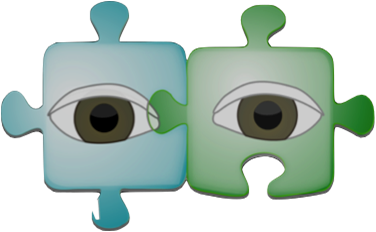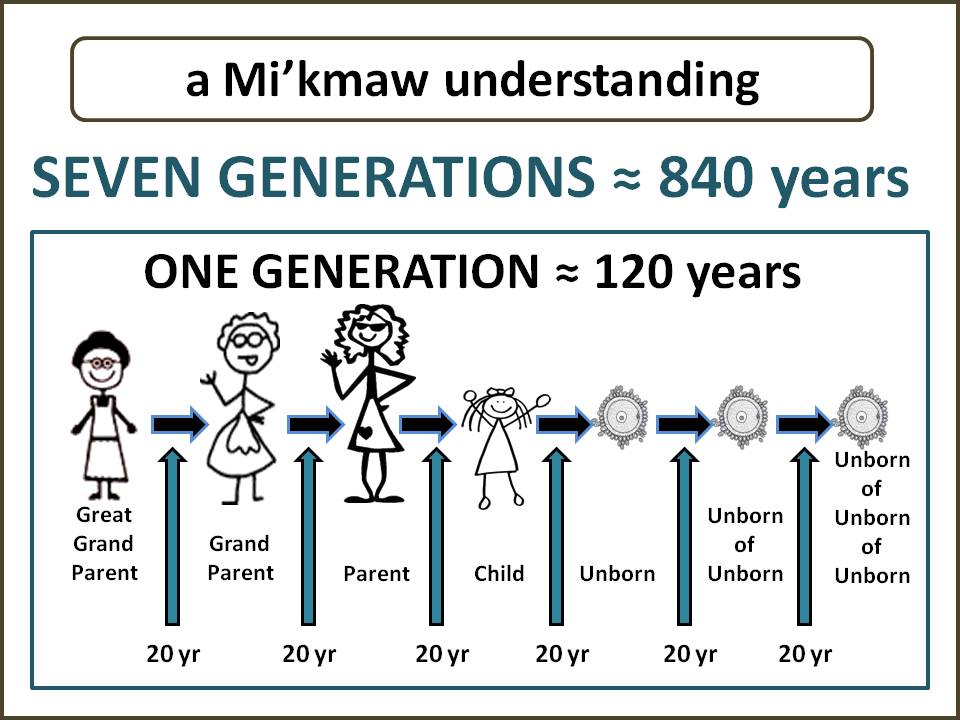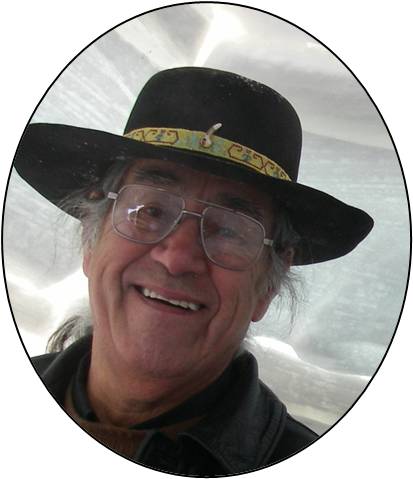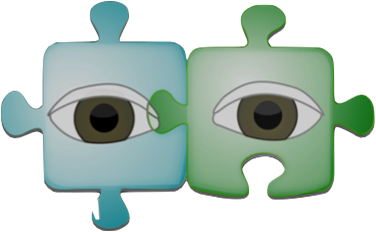Two-Eyed Seeing
 Two-Eyed Seeing is the Guiding Principle brought into the Integrative Science co-learning journey by Mi'kmaw Elder Albert Marshall in Fall 2004.
Two-Eyed Seeing is the Guiding Principle brought into the Integrative Science co-learning journey by Mi'kmaw Elder Albert Marshall in Fall 2004.
Etuaptmumk is the Mi'kmaw word for Two-Eyed Seeing.
We often explain Etuaptmumk - Two-Eyed Seeing by saying it refers to learning to see from one eye with the strengths of Indigenous knowledges and ways of knowing, and from the other eye with the strengths of Western knowledges and ways of knowing ... and learning to use both these eyes together, for the benefit of all.
Elder Albert indicates that Etuaptmumk - Two-Eyed Seeing is the gift of multiple perspective treasured by many Aboriginal peoples. We believe it is the requisite Guiding Principle for the new consciousness needed to enable Integrative Science work, as well as other integrative or transcultural or transdisciplinary or collaborative work.
You can see how we further explain and illustrate Two-Eyed Seeing within the diverse research and knowledge sharing presentations and articles we've produced over the years.
You can view our video about Two-Eyed Seeing.
You can read about our co-learning journey towards Two-Eyed Seeing.
You can read about research funding opportunities that arose in December 2012 when Two-Eyed Seeing became front and centre within a new initiative announced by the Institute of Aboriginal Peoples' Health (IAPH) within CIHR (Canadian Institutes of Health Research). Earlier, in March 2011, at a national roundtable on Aboriginal peoples' wellness Dr. Malcolm King, Scientific Director of IAPH, presented Two-Eyed Seeing as a model on which to base the business case then being developed within IAPH. The summary report for that roundtable "Aboriginal Peoples' Wellness in Canada: scaling up the knowledge - cultural context and community aspirations" can also be accessed here.
You can read about Two-Eyed Seeing in the March 2012 issue of University Affairs as the gift of multiple perspectives (or see pdf) for integrative scholarship.
Plus ... you can read about other examples of how Two-Eyed Seeing is being used towards the end of this section. In addition, if you search the internet using the key phrase "Two-Eyed Seeing", you'll find 100's more citations. It's amazing how far Elder Albert's guiding principle of Two-Eyed Seeing has travelled and how many different projects and collaborations are using it!

Etuaptmumk - Two-Eyed Seeing adamantly, respectfully, and passionately asks that we bring together our different ways of knowing to motivate people, Aboriginal and non-Aboriginal alike, to use all our understandings so we can leave the world a better place and not comprise the opportunities for our youth (in the sense of Seven Generations) through our own inactions.
Two-Eyed Seeing and Netukulimk
Elder Albert, in his explanations of Two-Eyed Seeing, frequently also talks about Netukulimk, especially when the discussion context involves our Earth Mother. Netukulimk is a Mi'kmaw understanding that, in Albert's words, "takes you into a place where you are very conscious of how the human two-leggeds are interdependent and interconnective with the natural world ... this philosophy / ideol ogy is so ingrained in your subconscious that you are constantly aware of not creating an imbalance." Key concepts within this understanding are: co-existence, interrelativeness, interconnectiveness, and community spirit. Albert emphasizes that these four apply to our relationships with each other and with Mother Earth.
ogy is so ingrained in your subconscious that you are constantly aware of not creating an imbalance." Key concepts within this understanding are: co-existence, interrelativeness, interconnectiveness, and community spirit. Albert emphasizes that these four apply to our relationships with each other and with Mother Earth.
A recent presentation in which Elder Albert spoke about Two-Eyed Seeing and Netukulimk can be viewed here. It is a co-presentation with Elder Murdena Marshall (Albert's wife) on Tan'telo'ltik (how we Mi'kmaq are), along with Canada Research Chair Cheryl Bartlett.
More on Two-Eyed Seeing
After some years experience in attempting to explain the Guiding Principle of Two-Eyed Seeing to various audiences, Albert has also begun to say: "Two-Eyed Seeing is hard to convey to academics as it does not fit into any particular subject area or discipline. Rather, it is about life: what you do, what kind of responsibilities you have, how you should live while on Earth … i.e., a guiding principle that covers all aspects of our lives: social, economic, environmental, etc. The advantage of Two-Eyed Seeing is that you are always fine tuning your mind into different places at once, you are always looking for another perspective and better way of doing things."
In bringing Two-Eyed Seeing into the Integrative Science journey, Elder Albert has passionate concerns for the well-being and future of Aboriginal peoples and Indigenous knowledges. This is evident when he states what happens in its absence: "When you force people to abandon their ways of knowing, their ways of seeing the world, you literally destroy their spirit and once that spirit is destroyed it is very, very difficult to embrace anything – academically or through sports or through arts or through anything – because that person is never complete. But to create a complete picture of a person, their spirit, their physical being, their emotions, and their intellectual being … all have to be intact and work in a very harmonious way."
Integrative Science research on visuals to help Two-Eyed Seeing
Iconic visuals have been developed within the Integrative Science journey for the Guiding Principle of Two-Eyed Seeing.
Initially we simply used an image of two eyes:

Around 2007, we switched to an image in which two eyes are positioned behind two connected pieces of a jig-saw puzzle:

This switch followed Elder Albert's encouragement that we emphasize that Mi'kmaw First Nations' understandings are but one view in a multitude of Aboriginal and Indigenous views … and similarly so are the various disciplines in the Western sciences. All of the world's cultures (which we take include Western science) have understandings to contribute in addressing the local to global challenges faced in efforts to promote healthy communities. One might wish to talk about Four-Eyed Seeing, or Ten-Eyed Seeing, etc., as four perspectives or ten perspectives are brought into the collaboration.
Furthermore, Albert indicates "the two jig-saw puzzle pieces help remind us that, with respect to Aboriginal Traditional Knowledges [Indigenous knowledges], no one person ever has more than one small piece of the knowledge." There is a need to recognize that Traditional Knowledges draw upon the community of Elders and other Knowledge Holders (i.e., the knowledge is collective), as well as the collective consciousness of the people. So, here too, one might wish to talk about multiple-eyed seeing.
Two-Eyed Seeing - more explanation, including "weaving back and forth"
The guiding principle of Two-Eyed Seeing further helps us to acknowledge the distinct and whole nature of Indigenous knowledge and ways of knowing (i.e., such are represented as a whole eye). Similarly, it helps us recognize the distinct nature of Western knowledge and ways of knowing (i.e., such are also represented as a whole eye). At the same time, Two-Eyed Seeing asks that these two eyes work together (i.e., as they do in binocular vision).
It may be that in a particular set of circumstances we will choose to call upon the strengths within Indigenous sciences, whereas in another set of circumstances we might choose to call upon those within the Western sciences. Two-Eyed Seeing can require a "weaving back and forth" between knowledges, and this will draw upon abilities to meaningfully and respectfully engage in an informed manner in collaborative settings. To help us do this, we have developed the four big pattern knowledge understandings (with visuals) as tools. Read more about our efforts in this regard and about weaving capacity, under co-learning and under integrative science research to highlight the philosophies in our science stories.
Two-Eyed Seeing, in that it speaks directly to the setting of collaborative, cross-cultural work, intentionally seeks to avoid the situation becoming a clash between knowledges, domination by one worldview, or assimilation by one worldview of the knowledge of another.
Two-Eyed Seeing, as brought forward by Elder Albert Marshall, is increasingly being adapted by diverse organizations and initiatives beyond Integrative Science and outside of Cape Breton.
Two-Eyed Seeing ... some examples in action
Two-Eyed Seeing is becoming part of new policy and other significant change efforts. Some examples are listed below.
1) in 2012, within a new research funding opportunity announced by the Institute of Aborginal Peoples' Health (IAPH) within CIHR (see pdf of IAPH's Dec 2012 newsletter here).
2) in 2011, by the Institute of Aboriginal Peoples' Health (IAPH) within CIHR (or see pdf here).
3) in 2010, by the Government of Ontario's Ministry of Natural Resources (or see pdf here).
4) on-going, within developmental and interpretive plans for the Mi'kmawey Debert Cultural Centre of the Confederacy of Mainland Mi'kmaq.
5) in 2009, within projects that promoted indigenous astronomy and mainstream astronomy side-by-side in Canada's celebrations for the UN designated International Year of Astronomy 2009 (e.g. collaborations resulting in production of the DVD and storybook for the Mi'kmaw Night Sky Story Muin and the Seven Bird Hunters).
6) on-going, within the Collaborative Environmental Planning Initiative for the Bras d'Or Lakes and watershed in Cape Breton.
7) for 2011-2020, in the Government of Nova Scotia's Natural Resources Strategy entitled "The Path We Share" (or see pdf here with page indicated).
8) as presented at a conference in 2010, on the Government of Nunavut's Department of Environment's efforts to provide educational opportunities for Nunavut youth (or see pdf here with pages indicated). This work is being done by Sharina Dodsworth, a graduate student associated with the Institute for Integrative Science & Health. You can read more about Sharina's work here.
9) as presented within a course on permaculture at Blockhouse, NS during May 2012.
Two-Eyed Seing and "ethical space" and lifelong learning
In Integrative Science, we acknowledge the need for what Ermine et al. (2004) referred to as "ethical space" within the precarious relationship between Indigenous peoples and the Western world. In the combined understandings and words of Elders Murdena and Albert "we recognize that the Indigenous Sciences draw upon Tribal Consciousnesses, while we also recognize that the latter tend to be negated by too much formal education and that our times place an overwhelming emphasis on formal education. We must, therefore, be diligent in taking the best from our two worlds: Indigenous and Western. We recognize that Western Science privileges objectivity and de-emphasizes the human element, yet we depend heavily upon it and its technologies in our modern lives. Nevertheless, for the benefit of all humans, our times need to learn to factor the human element into science and to rediscover our humility as but one species on the planet".
When Murdena and Albert talk about formal education as above, they are recognizing its value and necessity in today's world while also asking that we recognize the rich value of informal education that occurs in non-institutional settings such as the out-of-doors, community gatherings, family story sharing, and mentorship relationships. The Aboriginal Learning Knowledge Centre within the Canadian Council of Learning developed a unique lifelong learning model for First Nations' peoples. It is structured in the image of a tree which, when examined in cross-section, is seen to emphasize formal and informal learning in each ring of growth over the course of the individual's lifelong learning journey, with Indigenous Knowledge and Western Knowledge at the core. The model identifies the nurturing guides for the learning journey as including teachers, elders, parents, mentors, and counsellors, and it identifies the sources and domains of knowledge as including the natural world, languages, traditions and ceremonies, ancestors, family, self, community, clan, nation, and other nations. You can access and interactively explore elements in the First Nations' Holistic Lifelong Learning Model.
Albert spoke about the human element in science at WIPCE (World Indigenous Peoples Conference on Education) 2005 in New Zealand; view the slides from his presentation and read his article in the Conference Proceedings.
Murdena also spoke at WIPCE (World Indigenous Peoples Conference on Education) 2005 in New Zealand; view the slides from her presentation and read her article in the Conference Proceedings.
Reference in above:
Ermine, W., Sinclair, R., and Jeffrey, B. 2004. The ethics of research involving Indigenous peoples. Report of the Indigenous Peoples' Health Research Centre to the Interagency Advisory Panel on Research Ethics.
